Last week, several drivers reached out to share emails they received from Lyft about upcoming changes to Lyft’s Power Driver Bonus. Senior RSG contributor Jay Cradeur also found out about these changes in person, so we had Jay investigate what’s happening and how Lyft and Uber bonuses have changed over the years.
Every week, for the past 6 months, I have been earning hundreds of dollars extra per week thanks to Lyft’s Power Driver Bonus. But last week, when I was in the Lyft Hub to discuss car options, my Lyft representative told me the Lyft Power Driver Bonus was going away.
The Lyft rep said there would be no car restrictions, nor peak hours, nor acceptance rate requirements. Hmmm, I thought to myself, “But can I still earn an extra $500 per week?”
Over the years, Uber and Lyft have both tried various iterations of bonuses, all in an attempt to buy drivers’ loyalty. Let’s look over the recent history of the Power Driver bonus as we prepare for the unveiling of Lyft’s latest offering. At the end of the article, I’ll share with you the information Lyft has provided us so far (including new bonus names!).
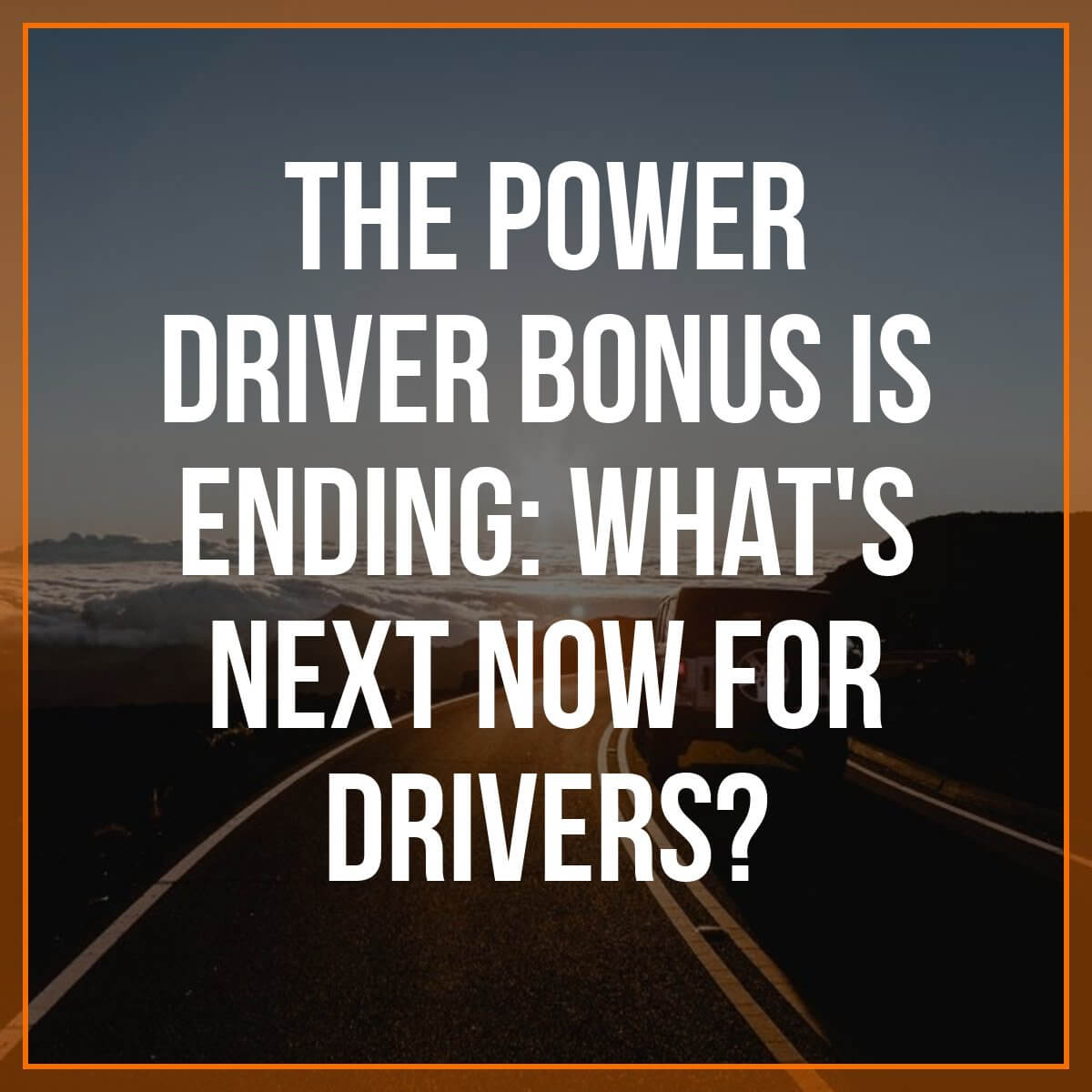
It All Started For Me In 2016 With Uber
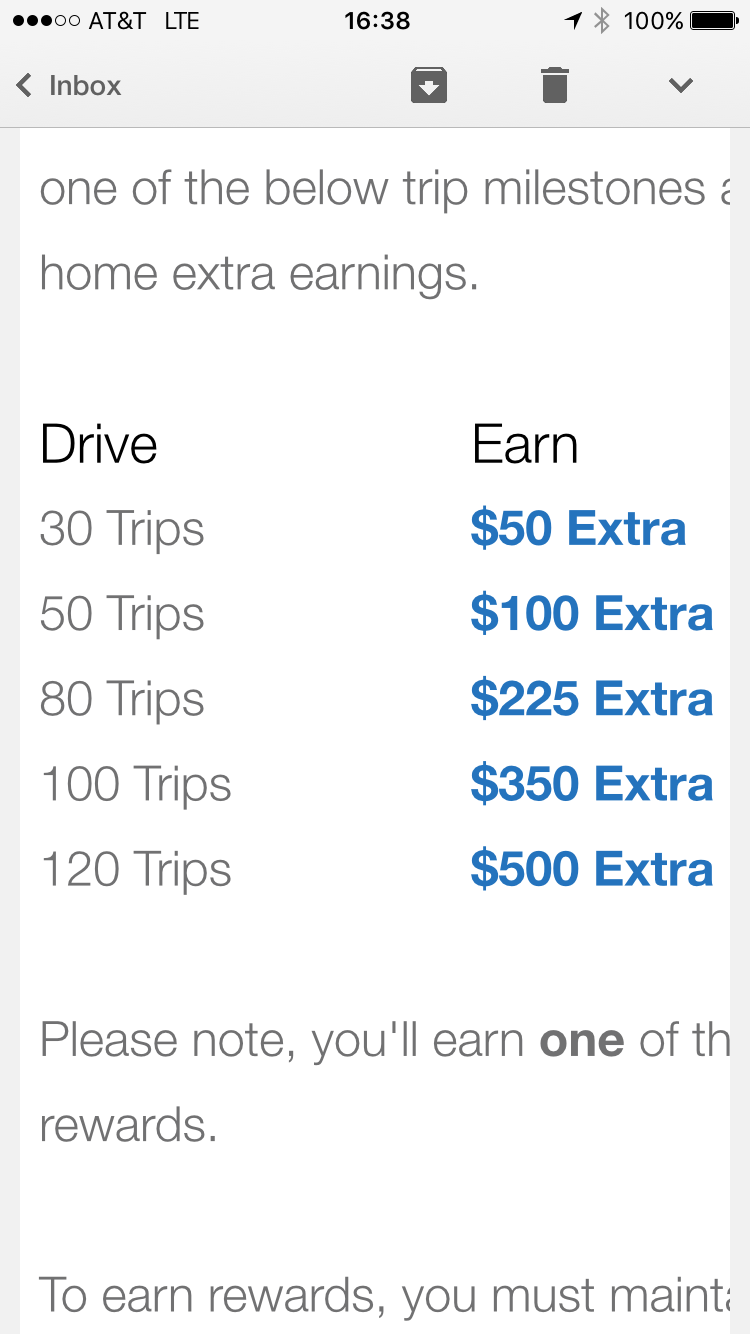
I remember the exact day that I heard about Uber’s driver bonus. I was in the old Hub location in San Francisco (before it moved to Daly City). I had decided to relocate to San Francisco to be a full time driver. I needed to make a change in my address.
As I was talking to the attendant, he told me I would now be entitled to earn a $500 bonus. Whoa! I thought to myself. All I had to do was drive 120 trips. I was very happy when Uber sent me this email confirming that I could qualify for the $500 bonus:
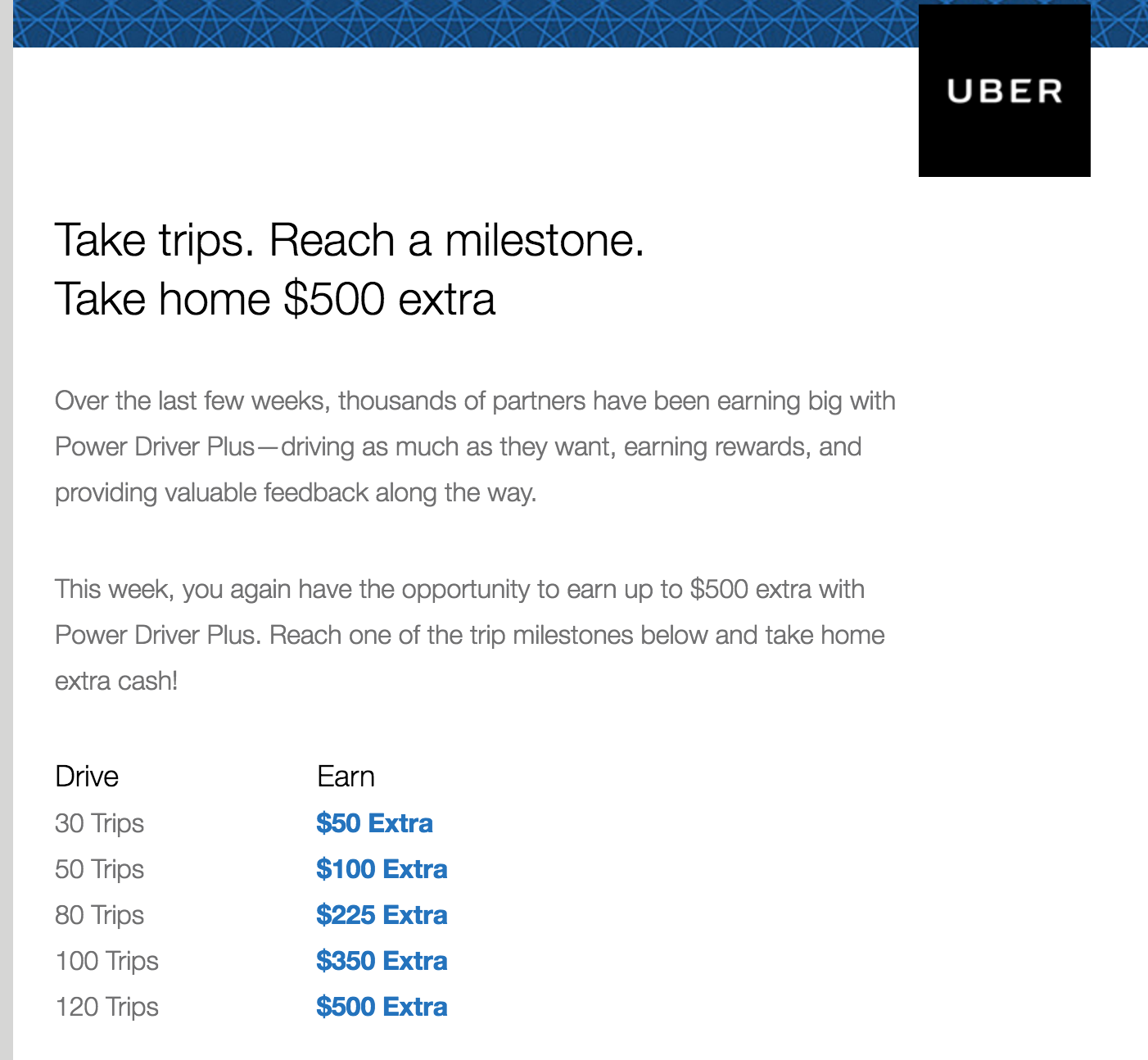
That’s just four good days of driving! This was such a sweet deal, as Uber was paying out over $4 extra per trip. All I had to do was keep my acceptance rate above 90%. Piece of cake!
You can check out the best gig jobs here.
Lyft Flexes Its Bonus Muscles
Soon after, Lyft came out with a bonus of their own. At first, the bonus paid out 20% of your total earnings (which was equivalent to the commission Lyft collected) and a further bonus of up to $250. However, with the Lyft bonus, you needed to drive at specific times of the day, called Peak Hours.
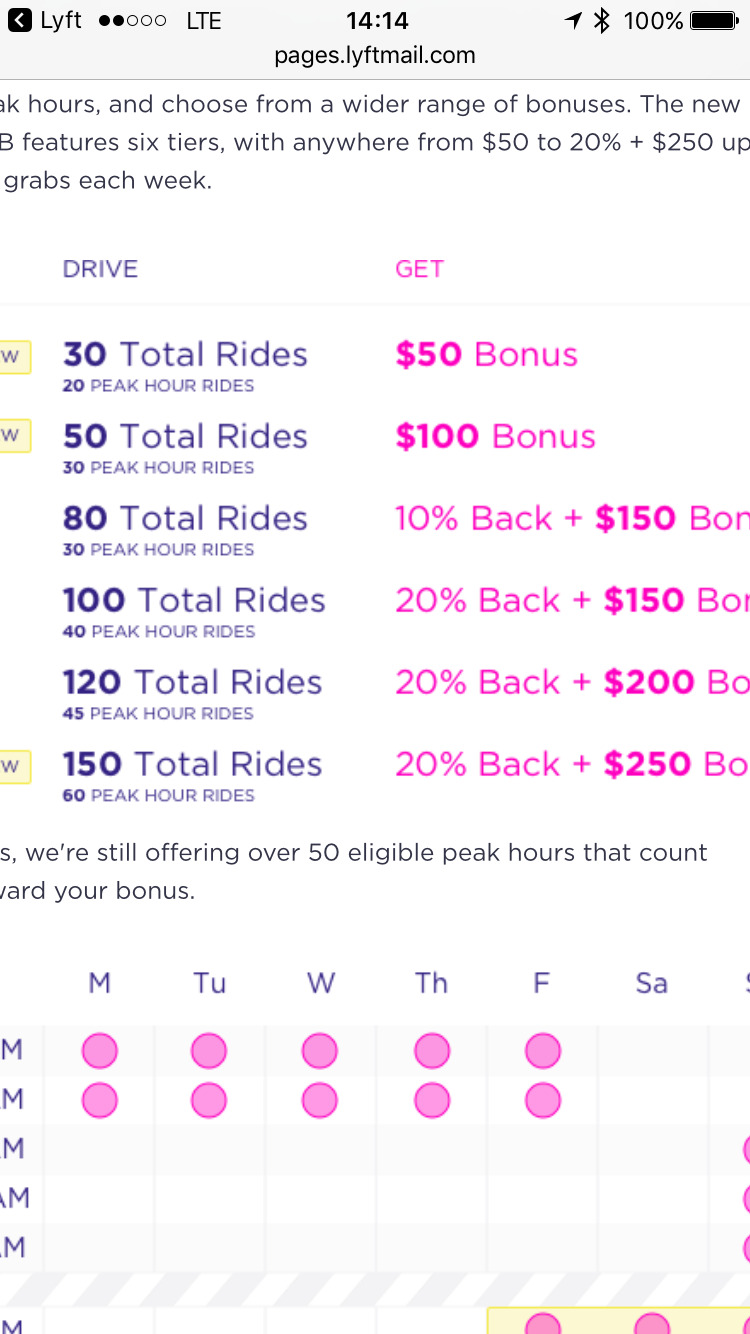
For an example, let’s say I drove the required 150 rides and 60 Peak Hour rides, and earned $1,500. My total bonus would be $375 (20% of my total earnings) plus $250 for a total bonus of $625. Since the Uber bonus did not require that I drive at any particular day or time, I opted to drive for the Uber bonus and earn an easy $500.

Uber Changes The Bonus After A Strong 6-Month Run
In late 2016, Uber slowly began to erode the $500 bonus. First Uber reduced the top payout amount, initially to $470, and then in early 2017 to $450. Uber also softened the requirements for the acceptance rate, now 65%, down from 90% in 2016.
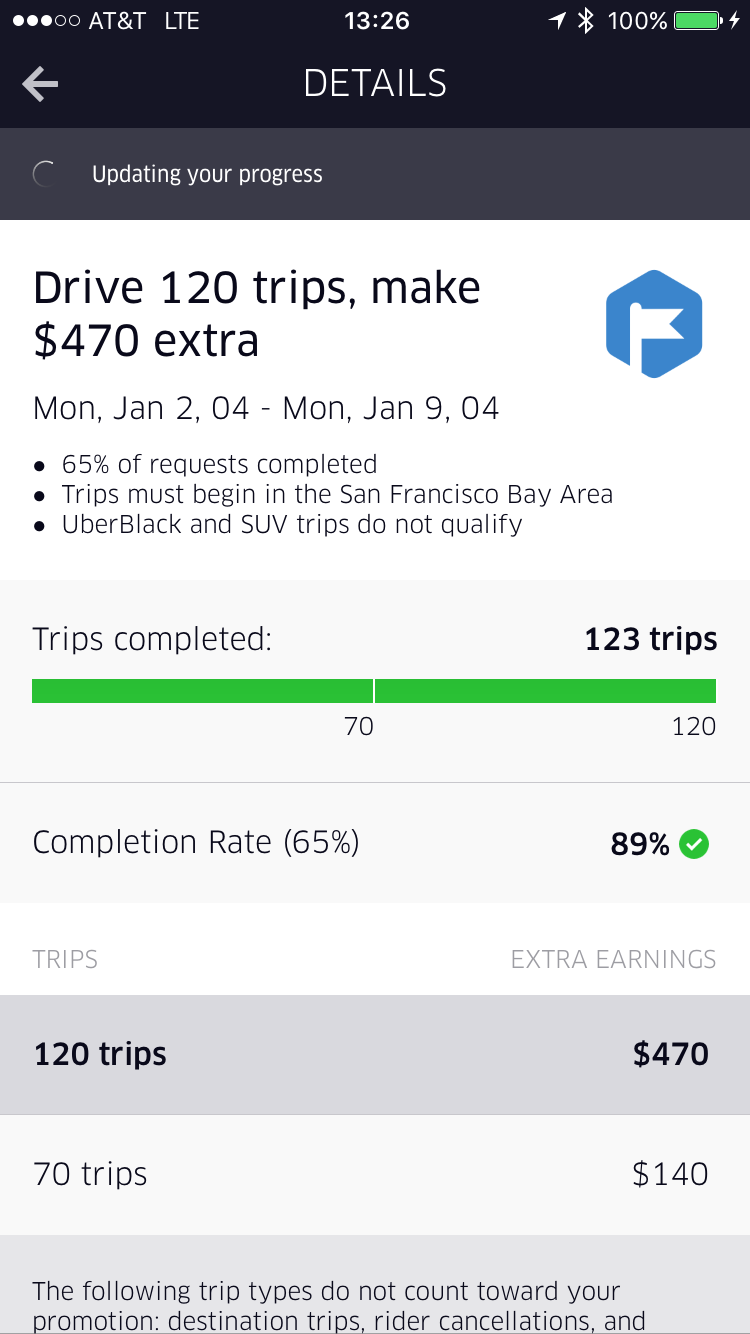
Uber’s Radical Change In Bonus Structure
Later in 2017, Uber radically changed their bonus structure by offering a unique bonus every three to four days.
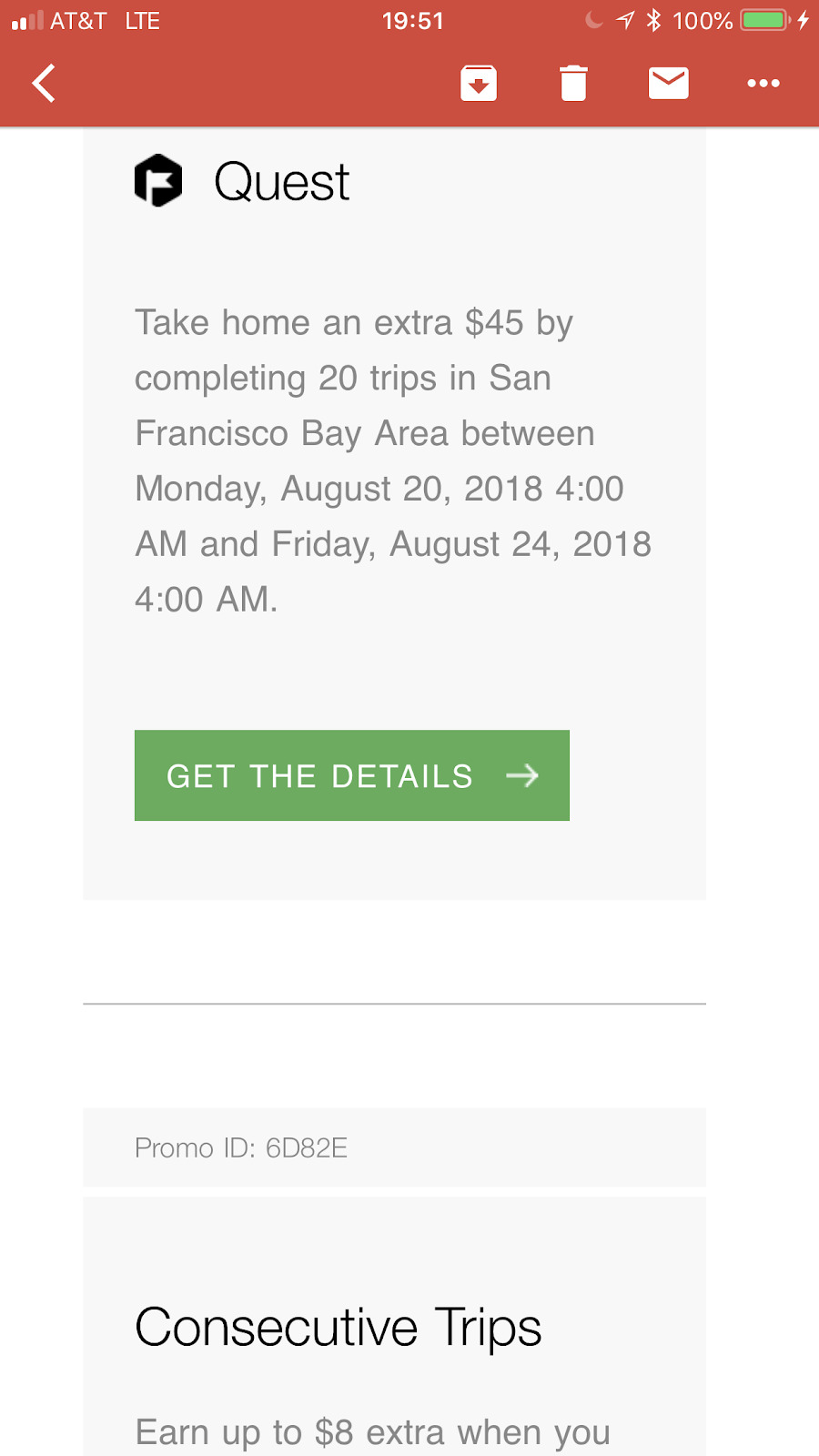
Now, instead of anticipating a consistent bonus each week, drivers would have to wait until the night before either Monday or Friday to see what Uber would offer. At the same time, Uber removed all acceptance rate requirements. This is the current state of affairs with Uber.
Lyft’s Current Power Driver Bonus
Over time, Lyft also made changes to their bonus structure. First they eliminated the percentage of payout component of the bonus. Instead, Lyft offered a significantly higher bonus based on number of rides. After a few revisions, Lyft settled on these requirements and bonus amounts:
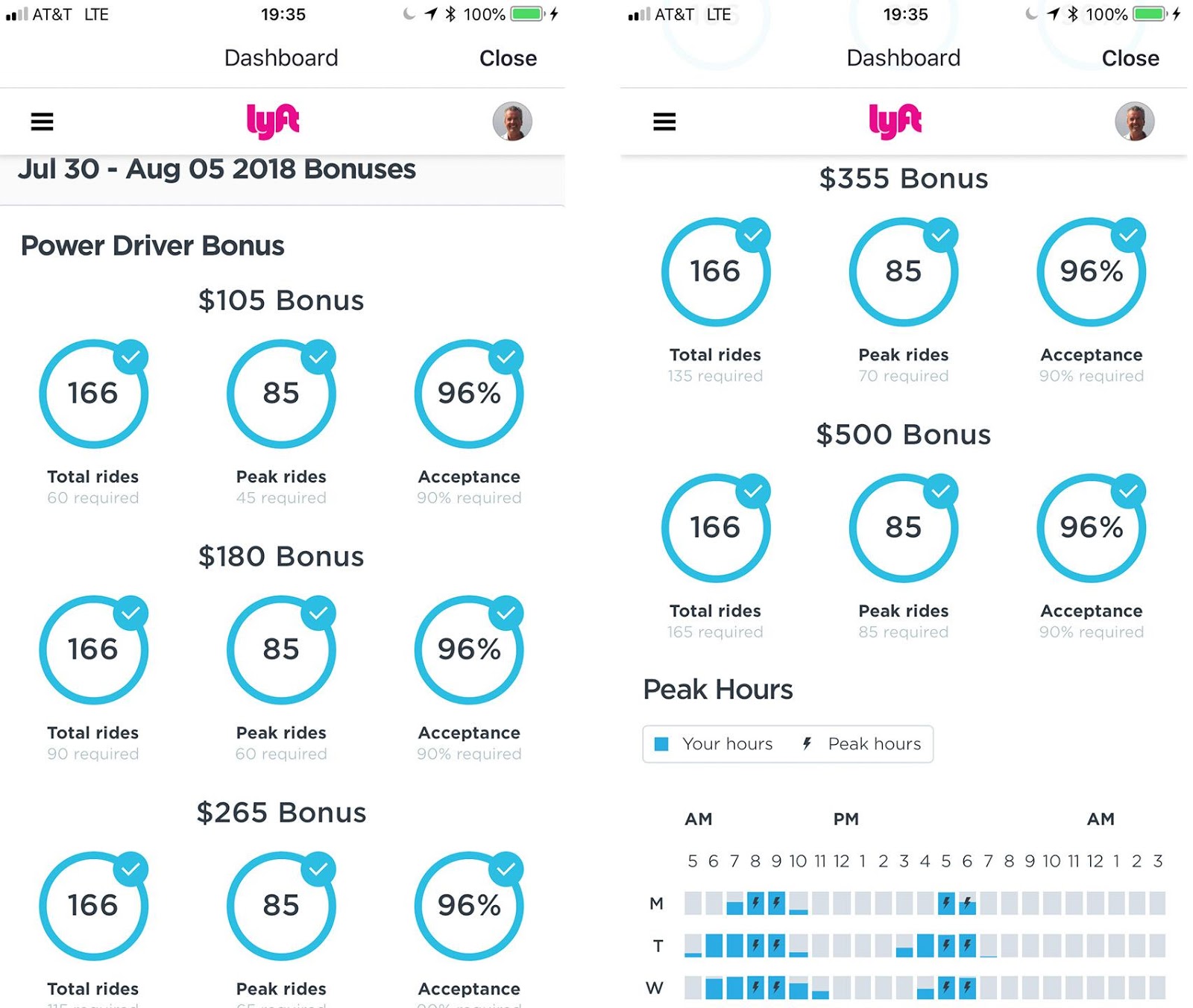
When I saw this offer, I knew that I would be doing most of my driving for Lyft. As a driver who regularly makes 180 trips in a week, this was the perfect incentive for my workweek.
It is a tough bonus to achieve, as you really need to maximize your rides during peak hours, especially if you are not a late night driver. Lyft has used this as their bonus for approximately the past 6 months.
Random Assignments
It must be said that while these are the bonuses that I have been offered, that does not mean that you have received the same bonus offers. Every time I take a Lyft or Uber, I ask the driver about his or her bonus. It seems everyone gets a different bonus. Some have Power Zones. Some have Guarantees. Some drivers get more, and some get less.
When asked about this, Lyft told me bonuses are offered on a “random” basis. Naturally, this infuriates me to no end. Why work hard, why do a superlative job, why put in the extra hours when my bonus capacity is assigned on a random basis? It goes against everything that I feel is democratic and fair for workers. But that is how Uber and Lyft work. It’s all a game, and we the drivers are but the pawns.
Watch: How to Create a Plan B as a Rideshare Driver
What’s Next for Lyft?
Did you get this email? (Thank you to reader Andrea for sharing this with us!)
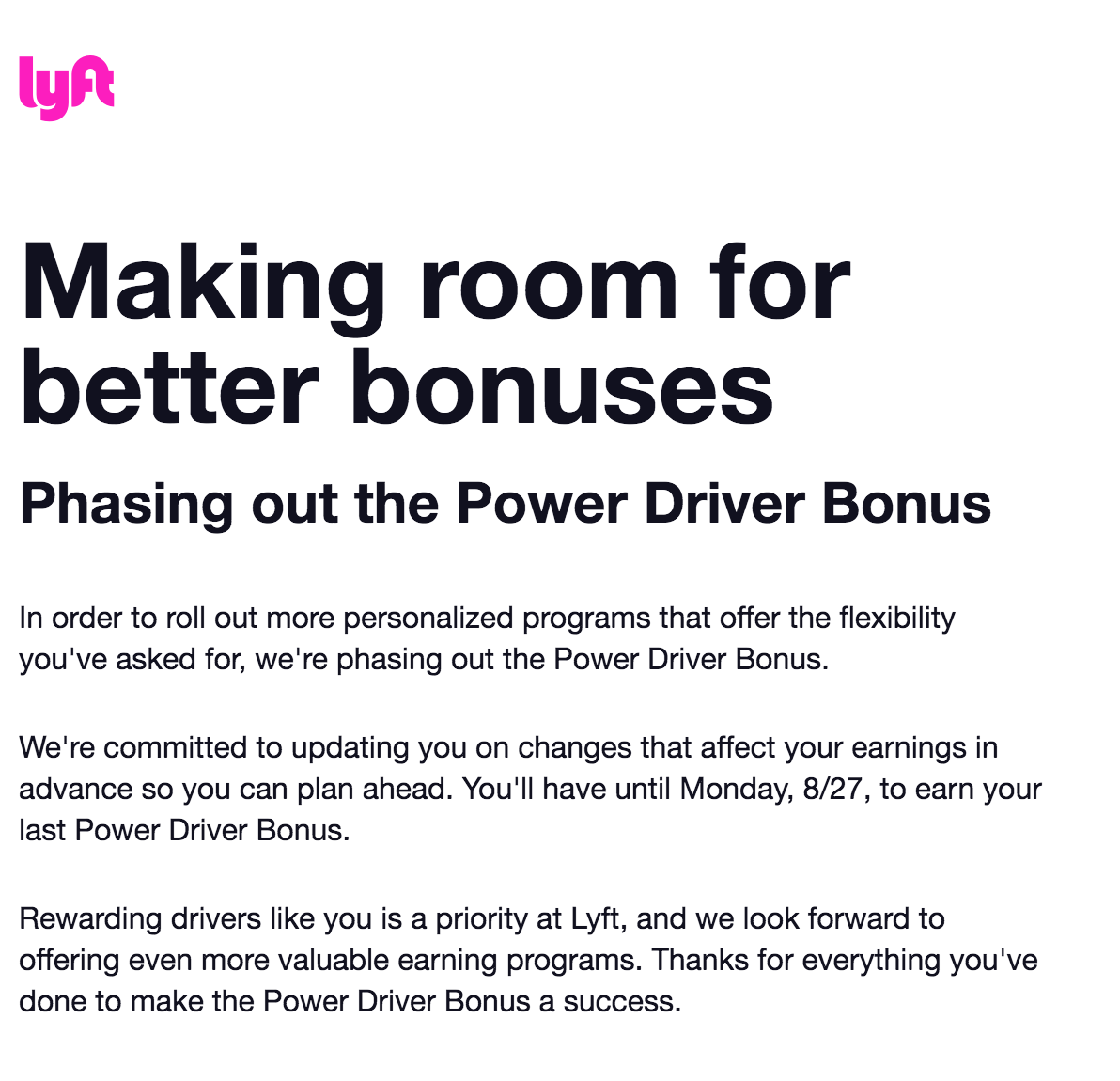
Here is what we know for sure: Starting next week, Lyft will be offering a bonus that is simpler to achieve so more drivers can boost their earnings. The new bonuses are called “Weekly Ride Challenges” and “Streaks” which will change (similar to Uber) every week and will be presented to each driver on Sunday for the next week. Lyft has confirmed that they have removed all requirements except number of rides:
- No peak hour rides
- No car year requirement
- No acceptance rate
But what will be the amounts? What will be the top values?
According to Lyft, those values will be assigned on an individual basis. Lyft informed us: “Now every driver will receive an offer that is tailored to their driving behavior, and current market conditions.” As a self-proclaimed power driver, I value a big goal and then a big payout. My loyalty will go to the company that offers the best overall pay structure.
I prefer Lyft’s app. I find Lyft to be the busier company in San Francisco. For those reasons, I sincerely hope Lyft comes through and demonstrates a commitment to their ardent and loyal drivers.
The new changes to Lyft’s PDB take effect on August 27, and soon after we should start to see the impact on drivers’ take-home earnings. While I’m ambivalent about the changes mentioned in this article, we’ll see what happens and I’ll write a new post comparing my before- and after-earnings to see what impact this is having on drivers. Stay tuned for that – and feel free to share your earnings before-Lyft PDB change and after.

Drivers, what do you think about these upcoming changes to Lyft’s Power Driver Bonus? Do you think the Weekly Ride Challenges and Streaks will improve your bottom line?
-Jay @ RSG




